Replicated Typo 2.0 has reached 100,000 hits! The most popular search term that leads visitors here is ‘What makes humans unique?’ and part of the answer has to be our ability to transmit our culture. But as we’ve shown on this blog, culturally transmitted features can be highly correlated with each other. This fact is a source of both frustration and fascination, so I’ve roped together some of my favourite investigations of cultural correlations into a correlation super-chain. In addition, there’s a whole new spurious correlation at the end of the article!
Edit: You can hear me talk about these correlations in an extended EU:Sci podcast.
Let Replicated Typo take you on trip from acacia trees to traffic accidents…
Distribution of Acacia Trees ~ Distribution of tonal languages (RT)
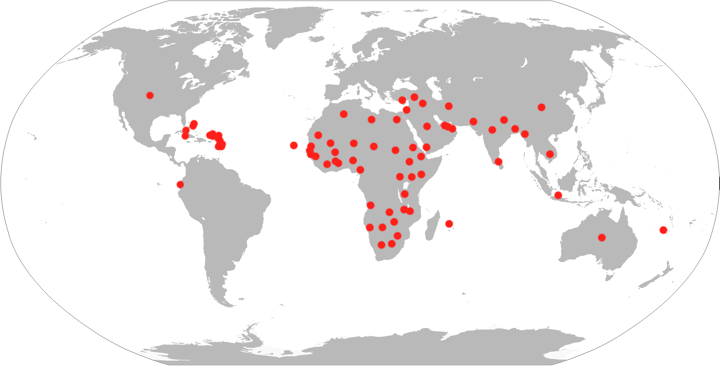
Distribution of tonal languages ~ Genes (Dediu & Ladd, 2007)

Genes ~ Individualism (Way & Liberman, 2010)
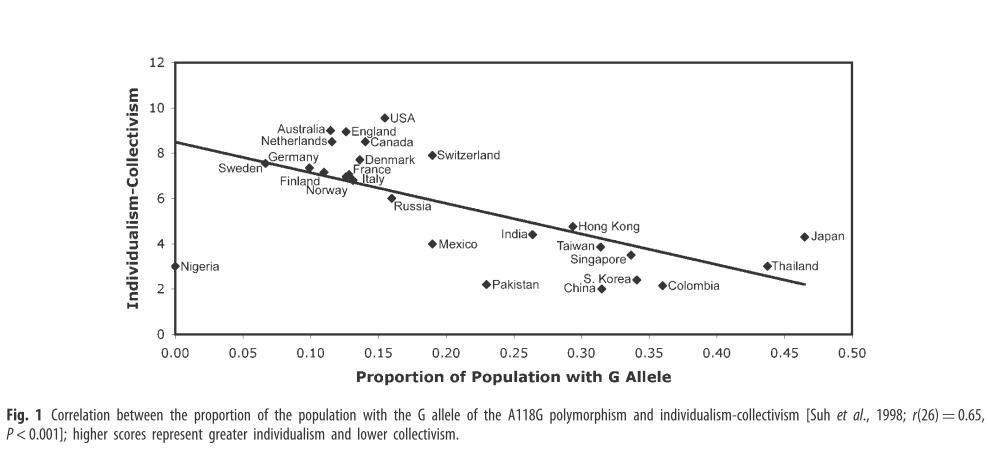
Individualism ~ Migration (RT)
Migration ~ Phoneme Inventory (Atkinson, 2011) (~ Population density, RT)
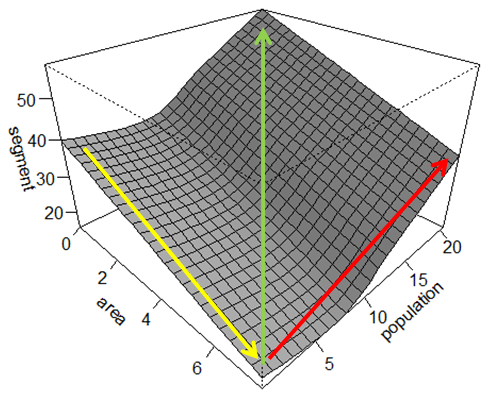
Consonant Inventory ~ Extramarital Sex (Ember & Ember, 2007)
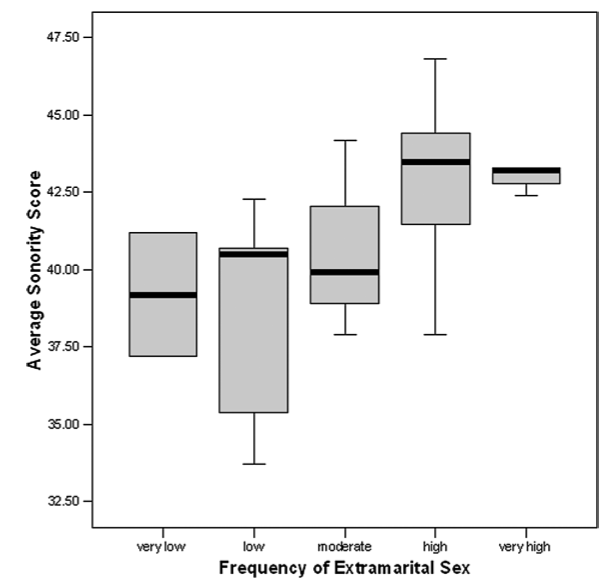
Extramarital Sex ~ Population Size (RT)
Population Size ~ Morphological complexity (Lupyan & Dale, 2010)
Morphological complexity ~ Partaking of Siestas (RT) ~ Climate (RT)
Partaking of Siestas ~ Climate (Murray, 1965; although also possibly adaptation to disease, Barone, 2000)
Climate ~ Linguistic Diversity (Nettle, 1998)
Linguistic Diversity ~ Traffic accidents (RT)
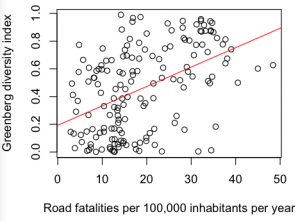
Note that the last correlation actually controls for climate, population density and migration! But should it also control for the amount of extramarital sex?
Bonus round
Last week, Geoff Pullum replied to an email saying that he would only meet me only if “there is good evidence that front rounded vowels correlate with building society account balances”. Seeing this as a challenge rather than evidence that my less-than-scientific approaches had become widely known, I delved once more into the datasphere:
Countries which have languages with front rounded vowels have higher gross savings per capita on average than countries which do not contain languages with front rounded vowels (t = 2.01, df = 94, p = 0.059).
When controlling for per-capita GDP, the proportion of languages with front rounded vowels in a country is a significant predictor of gross savings (r = 0.31, F(1,90) = 196, p < 0.00001). Data from World Development Indicators database and WALS.
References
D. Dediu, D. R. Ladd (2007). From the Cover: Linguistic tone is related to the population frequency of the adaptive haplogroups of two brain size genes, ASPM and Microcephalin Proceedings of the National Academy of Sciences, 104 (26), 10944-10949 DOI: 10.1073/pnas.0610848104
Way, B., & Lieberman, M. (2010). Is there a genetic contribution to cultural differences? Collectivism, individualism and genetic markers of social sensitivity Social Cognitive and Affective Neuroscience, 5 (2-3), 203-211 DOI: 10.1093/scan/nsq059
Atkinson QD (2011). Phonemic diversity supports a serial founder effect model of language expansion from Africa. Science (New York, N.Y.), 332 (6027), 346-9 PMID: 21493858
Ember, C., & Ember, M. (2007). Climate, Econiche, and Sexuality: Influences on Sonority in Language American Anthropologist, 109 (1), 180-185 DOI: 10.1525/aa.2007.109.1.180
Lupan, G. & Dale, R (2009). Language structure is partly determined by social structure Social and Linguistic Structure
Nettle, D. (1998). Explaining Global Patterns of Language Diversity Journal of Anthropological Archaeology, 17 (4), 354-374 DOI: 10.1006/jaar.1998.0328
Murray, E. J. 1965 Sleep, Dreams and Arousal. New York: Appleton-Century-Crofts.
Barone, T. (2000). Is the siesta an adaptation to disease? Human Nature, 11 (3), 233-258 DOI: 10.1007/s12110-000-1012-4

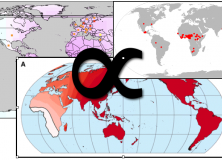

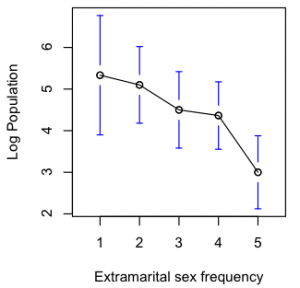
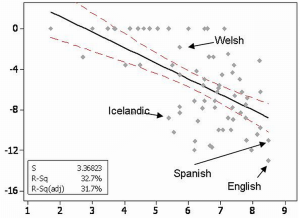
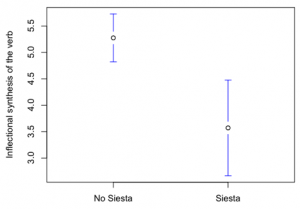
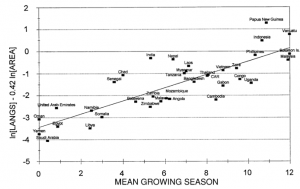
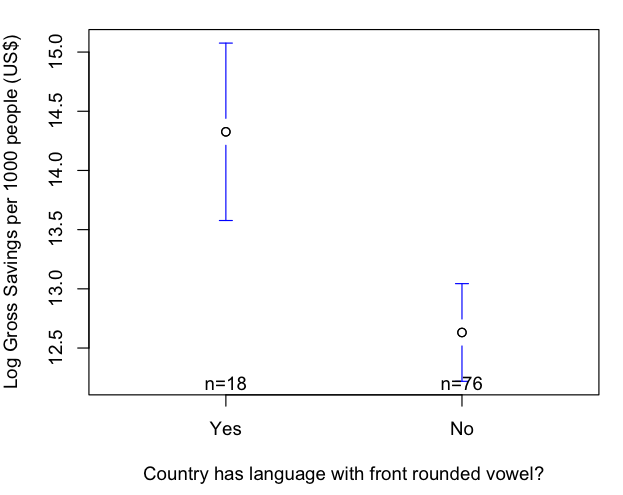
Holy spurious correlations, Batman (aka Sean)! I think you might have inadvertently saved us from a double-dip recession: we need to introduce a vocoid-based stimulus response package, stat! Poor, poor Greece: with their simple five vowel system they were almost certainly in-store for some turbulent economic times. Maybe future research could look into mean average word length as being a contributing factor…
I wonder why you haven’t referred to this paper:
http://faculty.som.yale.edu/keithchen/papers/LanguageWorkingPaper.pdf
where grammaticalization of future time reference is correlated with savings propensity, in all seriousness.
As can be seen from the paper, I had some correspondence with the author before he put it on the web. I actually mentioned to him that front rounded vowels would work equally well, but I don’t think he paid any attention.
Ah, yes I’ve read that paper – I was hoping nobody would mention it!
It’s certainly a hypothesis that many people will find interesting in the current economic climate. However, as you point out, there is no testing of other linguistic or cultural features.
Collaborating with some colleagues, I’ve actually re-run the statistics of this paper with other linguistic features. The results are mixed. However, Chen’s paper is not published yet, so I agreed not to discuss the work until my colleagues and I get a proper response together.